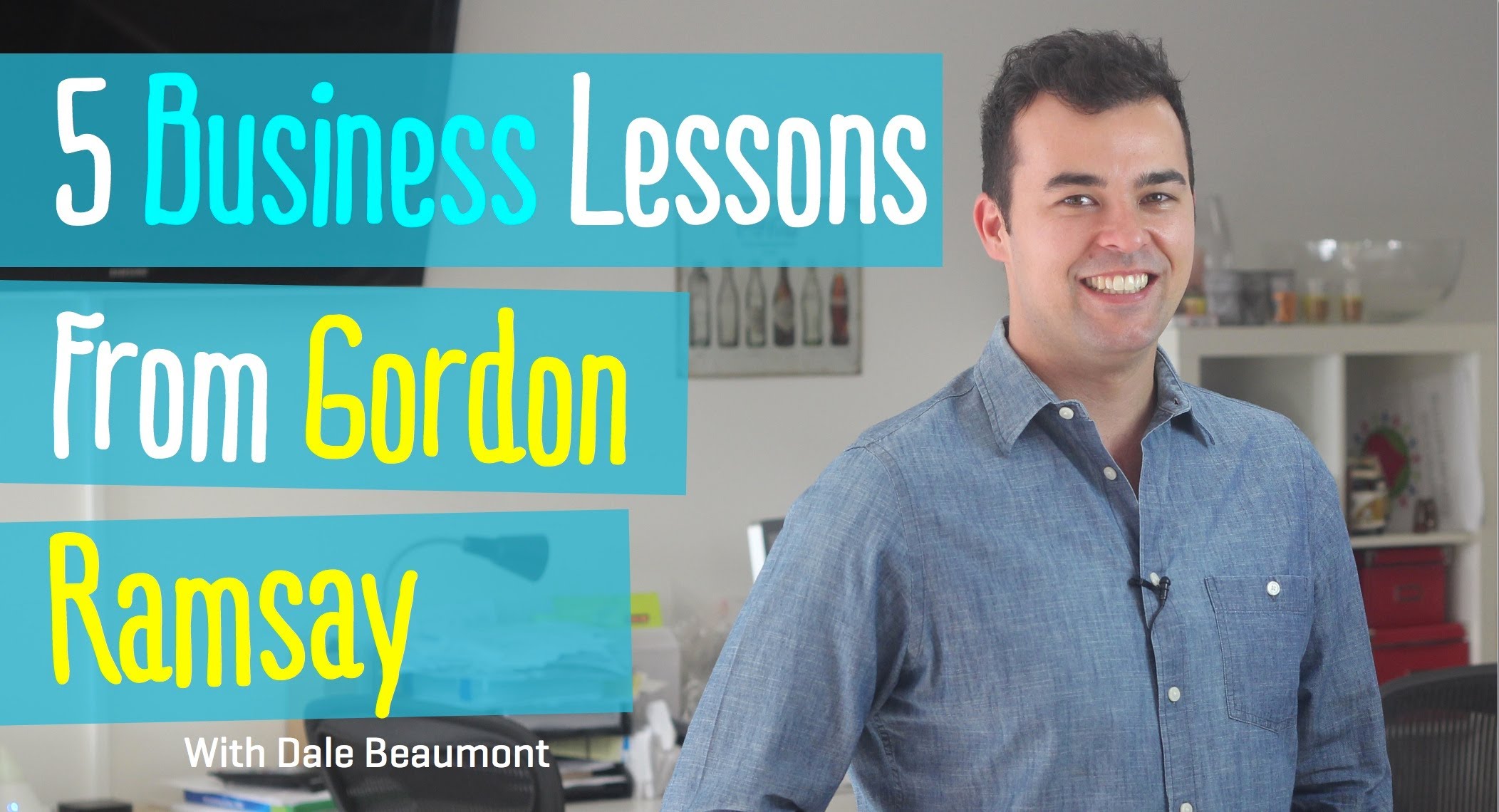[evg video=”https://www.youtube.com/embed/BXcYCjHekDg?rel=0″]
I don’t watch a lot of television, but when I do, I like watching something that is both entertaining and educational. One such show is Kitchen Nightmares hosted by the infamous Gordon Ramsay.
If you are not familiar with the show, Gordon, one of the world’s best chefs and restaurateurs, goes into a failing restaurant with the goal of turning it back to profit for the owners within just five days.
Having watched a bunch of episodes, I discovered that they all pretty much follow the same formula. The formula has five steps and you can soon see these principles are universal and can be applied to any business.
So if you’d like to break through your business plateau and achieve greater heights, read on and put these ideas into practice.
1. Get Re-Inspired
When Gordon Ramsay arrives at a restaurant, the business owner is almost always completely flat. Months or even years of hard work and dwindling profits have taken there toll and the owner is in complete survival mode and stressed to the max. At this point, Gordon could launch into ‘lets fix this’ and ‘lets fix that’, but it would be a complete waste of time, because you can’t achieve anything if you are mentally and emotionally spent.
So Gordon works with the owner to help them re-ignite their passion. He believes that if a business stinks it’s because the owner stinks, so that’s where he starts – from the top down. Sometimes he’ll ask a question like, “Why did you go into business?” Other times he gets them to look at old family photos or he’ll take them to markets, put a blindfold on them and ask them to name foods just by their smell.
Now back to you. If you are in a state of perpetual stress or exhaustion, you’re probably running on 30% of your capacity. So if that’s you: stop now, take a break and do whatever you need to do to get re-inspired.
Question for Reflection: What can you do to re-ignite the passion for your business?
2. Own a Niche
Once the owner is in a more positive state and they have got back some energy, then and only then, can they start fixing their problems. The first port of call is to clarify their niche. What’s a niche? It’s the position that you hold in someone else’s mind. The problem is, that many businesses try to play it safe and when they start struggling they go after any opportunity that moves.
Someone says, “Do you do pizza?” And the owner says, “No, but we will tomorrow,” The owner then tells their chef, “Go buy whatever you need to buy because we’re making pizza.” “Oh and arrive two hours earlier because you need to prepare all of the dough.” Once this happens half a dozen times you start to lose your edge. You go from ‘that restaurant that does amazing seafood’ to ’that restaurant that does a bit of everything for everyone’. This then spills onto the decor and the restaurants looks sloppy and unstructured.
Instead you need to stake your claim. “We’re going to be the most authentic Mexican restaurant in Sydney”. Then make all your food, decor and service decisions based on that claim, without deviating. Remember you can’t be all things to all people, so pick something and stick to it.
Question for Reflection: What do you stand for in the market? Is it clear and can customers see it?
3. Trim the Fat
Once Ramsay has helped the owner to identify and own their niche, the conversation invariably rolls onto the menu. In other words, the products they are selling. In almost every single case I have seen they are offering way too many things on their menu. In fact, one Indian restaurant was offering over 150 items. Gordon says, “We need to cut this down to around 12”.
As you can imagine this conversation goes down like a lead balloon, because it sounds crazy, right? And completely counter intuitive. But as Gordon explains, you can’t be remarkable if you are doing too many things. And remarkable is what you need to be because people never go back to an average restaurant.
Furthermore, with a smaller menu you can buy stock in bulk, preparation is much easier and meals get served a lot faster. The result is lower costs, better quality and faster service, which ultimately means a lot more profit.
Question for Reflection: What can you cut out of your business?
4. Communicate Effectively
Once the niche and products are nailed, the next major problem area to work on is always people. After years of stress and financial pressure, relationships are usually at breaking point. Gordon normally handles this by getting everyone together.
He then goes through one person at a time and asks, “What’s going wrong? What’s broken? And how should we fix it?” Now whenever this happens I’m always amazed at the looks on people’s faces. They’re shocked, because they’re literally hearing everyone’s ground breaking wisdom for the first time. You think if a business was struggling they would be talking about this sooner, but clearly these owners have never stopped to ask for anyone else’s opinion.
Then once everyone has shared and the owner has really listened, Gordon encourages everyone to start adopting their new behaviours and work together as a unit, rather than despondent individuals. Then over the next few days he keeps reminding people to speak up and to listen intently when others are doing the same.
Question for Reflection: How often are you asking your team questions and listening?
5. Create an Experience
With communication amongst the staff back on track, now it’s time to focus on the most important person in any business – the customer. Again, up until this point the owner has been so preoccupied with his or her own drama that they are at best cold to their customers and at worst, completely rude!
With that attitude now a thing of the past, Gordon rallies the troops and tells the team, “We need to create a knock-their-socks-off experience for your customer.” This involves all of the things that staff know, but over time have forgotten – things like being enthusiastic, eye contact, smiling and helping customers into their seats. Then once customers are feeling good, Gordon encourages them to bring alive the menu and continually ask if they’d like another drink or if they’d care for dessert. Clearly all factors that help increase the restaurants average dollar sale.
But ultimately the true test is to create an experience that will make the customer want to come back and feel inspired to share their experience with friends. In other words repeat customers and referrals – the life-blood of any business.
Question for Reflection: What are 10 things you can do to wow your customers?
Final Thoughts
In closing, I’d encourage you to download (via iTunes of course) a few of the episodes of Kitchen Nightmares and watch them. It is very interesting to watch the human dynamic and leadership lessons at play.
Ultimately though the biggest lesson from the show is that a business is a reflection of the owner. You may say, “What about the staff, don’t they have a role to play?” Of course they do. But if they are not performing, it’s because you – the owner – have allowed that behaviour and mindset to exist.
So start with you. Follow the principles above and enjoy putting them into practice.


